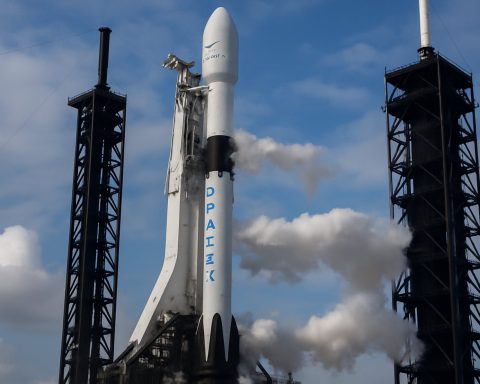- The James Webb Space Telescope suggests potential biosignature gases on the distant planet K2-18b, sparking excitement and skepticism.
- K2-18b exists in the habitable zone, raising possibilities for liquid water and life-supporting conditions.
- Exotic molecules in the atmosphere suggest alien microbes might exist, yet experts caution against premature conclusions.
- Atmospheric specialist Jake Taylor’s analysis finds no signs of alien gases, recommending further investigation.
- Proponents of the discovery, Måns Holmberg and Nikku Madhusudhan, maintain confidence in their atmospheric model.
- More data are expected, with astronomers emphasizing patience and vigilance to avoid misleading claims.
- Humanity navigates a complex balance between enthusiasm for discovery and scientific rigor until conclusive evidence emerges.
The air crackles with excitement and skepticism within the scientific community as the James Webb Space Telescope challenges astronomical assumptions, suggesting the possibility of biosignature gases on a distant planet, K2-18b. The intoxicating allure of discovering life beyond our solar realm ignites imaginations worldwide, yet the path to confirmation teems with complexity and debate.
Nestled more than a hundred light-years away, K2-18b orbits within its host star’s habitable zone, boasting conditions ripe for liquid water—a celestial cauldron where life, as we know it, might brew. Recent claims of exotic molecules in its atmosphere fan the flames of speculation about alien microbes thriving in its clouds. Yet, not all see an alien signature written in the sky’s chemistry.
Jake Taylor, an atmospheric specialist from the University of Oxford, poured a dose of caution into the bubbling mix of revelation and speculation. Through his impartial probe of spectral data from the James Webb Space Telescope, he encountered not the lively bumps and wiggles of alien gases, but a sedate flat line. Taylor’s analysis suggests silence where others hear whispers of life. His reticent conclusion stirs the scientific pot, emphasizing the need for further cosmic eavesdropping before airing any extraterrestrial proclamations.
Astronomers, like Laura Kreidberg from the Max Planck Institute for Astronomy, echo the prudent patience echoed by Taylor. The astronomy community knows the delicate dance required to untangle the signals of distant worlds. They keep watch, wary of interpretive overstep—a misstep here could echo like the false cry of discovery, eroding public trust.
Yet the researchers behind the original, electrifying claim remain unworried. Måns Holmberg and Nikku Madhusudhan confidently stand behind their atmospheric model’s robustness, suggesting the simplicity of Taylor’s approach as unable to grasp their evidence’s full scope. Their velvet confidence stands unshaken, awaiting further celestial insight.
As data are set to flood public channels, the clamor will only crescendo. More keen minds will dissect the sprawling data tapestry, perhaps unraveling new truths. Kevin Stevenson from Johns Hopkins insists this reanalysis reflects the community’s vigilance—a collective nod to the risks of premature pronouncements drowning our longed-for revelations in cries of wolf.
With cosmic ambitions in its sights, humanity humbly treads the fine line between the exuberant chase of discovery and the reasoned rigor of science. Until we truly glimpse our reflection among the stars, wonder and skepticism dance closely—an elegant, intertwining waltz.
Could the James Webb Space Telescope Have Unveiled Life on K2-18b?
The astronomical community buzzes with the intriguing possibility of life on K2-18b, a distant exoplanet located over 100 light-years away. Recent analyses of data from the James Webb Space Telescope (JWST) have hinted at potential biosignature gases in the planet’s atmosphere. Let’s delve deeper into this groundbreaking discovery, exploring the complexities of celestial research, and what this might mean for the future of space exploration.
Understanding K2-18b: A Candidate for Extraterrestrial Life
Location and Characteristics
– Distance: K2-18b is located approximately 124 light-years from Earth in the constellation Leo.
– Size and Type: Classified as a “super-Earth” or “mini-Neptune,” it is about 2.6 times the radius of Earth, with a mass about 8.6 times greater.
– Atmosphere: Previous studies using the Hubble Space Telescope indicated the presence of water vapor and hydrogen, potentially pointing to conditions suitable for life.
Why It Matters
– Habitable Zone: K2-18b orbits its star within the “habitable zone,” where conditions like temperature might allow the presence of liquid water—a vital ingredient for life as we know it.
– New Biosignatures: The JWST’s ability to detect exotic molecules fuels speculation of life beyond Earth, renewing efforts to analyze the atmospheric composition for signs of living organisms.
Debates and Interpretation of Data
The Scientific Discourse
– Jake Taylor’s Analysis: An atmospheric specialist from the University of Oxford, Taylor urges caution in interpreting the data, noting a lack of significant spectral variations that could denote life-related gases.
– Conflicting Views: Researchers like Måns Holmberg and Nikku Madhusudhan argue for the robustness of their atmospheric models and suggest that the JWST data might indeed imply life indicators.
The Challenge of Confirmation
– Complex Interpretation: The task of confirming biosignatures is complex, requiring precise analysis to distinguish between biological and abiotic processes.
– Expert Opinions: As expressed by Laura Kreidberg, confirming extraterrestrial life requires meticulous study to avoid drawing premature conclusions—a false claim could undermine scientific credibility.
Exploring Further: The Next Steps in Astrobiology
How to Approach New Discoveries
1. Collaborative Analysis: Encourage collaboration among international research teams to cross-validate findings.
2. Continuous Observation: Employ multiple observation methods and refine analytical techniques for more reliable data.
3. Public Engagement: Maintain transparency to cultivate public understanding and trust in the scientific process.
Real-World Applications and Future Prospects
– Enhanced Space Exploration: Insights into exoplanetary atmospheres guide future missions seeking extraterrestrial life forms.
– Technological Innovations: As spectroscopic techniques advance, the potential for discovering life on distant worlds increases exponentially.
Security, Sustainability, and Looking Forward
Maintaining Vigilance and Responsibility
– Data Security: Ensure that data from projects like JWST is securely shared among researchers while maintaining integrity.
– Ethical Considerations: Address the ethical implications of discovering and potentially interacting with extraterrestrial life.
Long-Term Outlook
– Industry Growth and Impact: The space industry continues to expand, with private and public sectors investing in frontier technologies to explore the universe.
– Global Collaboration: Fostering global partnerships in space exploration can lead to more innovative advancements and shared knowledge.
Conclusion: A Call for Patience and Perseverance
The excitement surrounding K2-18b is palpable, but the science community remains tethered to caution and methodical inquiry. Readers anxiously anticipating confirmation of life beyond our solar system should stay engaged and informed, keeping pace with the unfolding revelations. In the meantime, tips for aspiring astronomers include keeping up-to-date with recent studies, participating in citizen science projects, and nurturing a skeptical yet open-minded approach to astronomical claims.
For further reading and up-to-date information on astronomical advancements, visit the NASA website.









